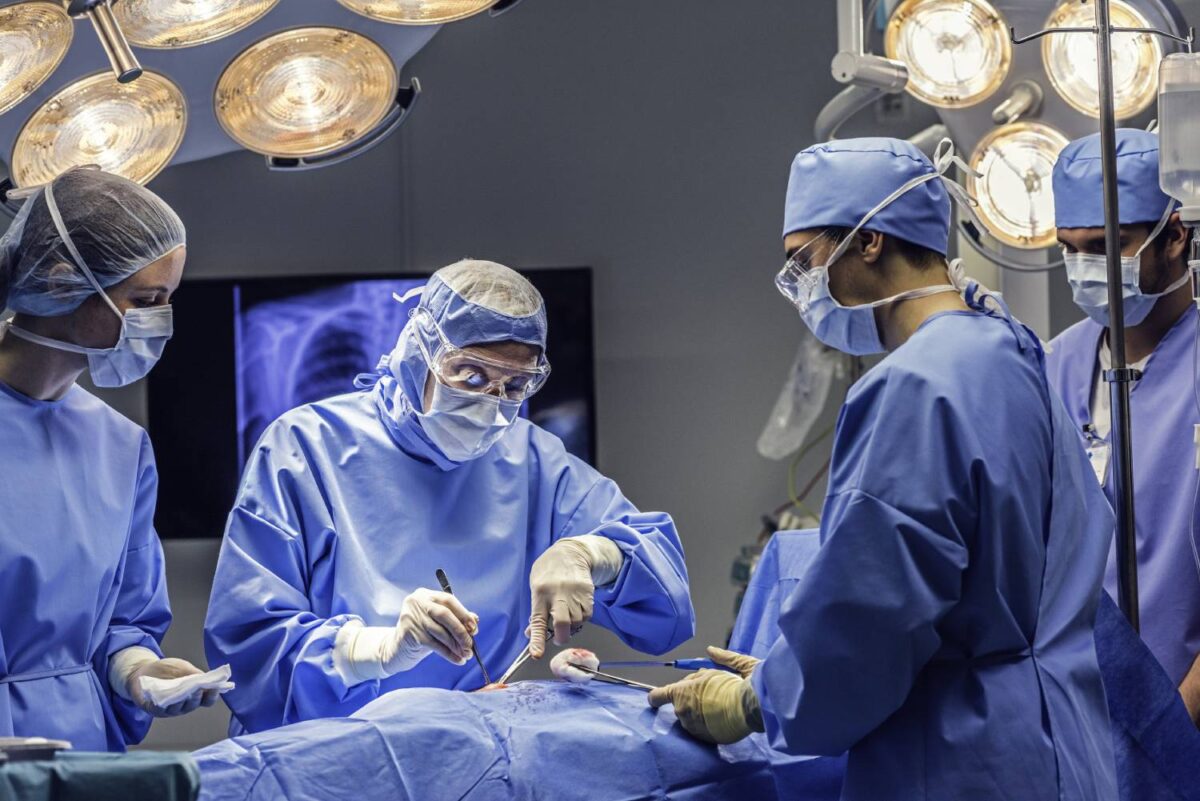Preventing Surgical Site Infections of Staphylococcus Aureus in the Perioperative Period

Surgical site infections (SSIs) pose a serious threat to the safety and success of surgical procedures. The CDC provides the most widely used definition of SSI, classifying infections by depth and involved tissues.1 A superficial incisional SSI involves the skin or subcutaneous tissue; a deep incisional SSI involves the fascia or muscular layers; and an organ space SSI involves any part of the body, besides the aforementioned layers, opened or manipulated during a procedure.1,2 Reported SSI rates depend on the use of objective criteria to define SSIs.3,4
Surgical site infections comprise 20% of all hospital-acquired infections, making them the most common type of this category.2 SSIs also present as the costliest of these infections. Research associates SSIs with increased length of stay and a 2- to 11-fold increase in mortality risk.2 Most patients recover from SSIs with no long-term consequences; however, the infection itself accounts for 77% of mortality in SSI patients.5,6 Estimates propose a 2% to 5% incidence of SSIs in inpatient surgery cases.6 Annual incidence estimates range from 160,000 to 300,000 in the US;5,6 however, post-discharge surveillance challenges likely contribute to an underestimation in these incidence figures.2
Furthermore, the financial burden of surgical site infections exceeds the cost of all other hospital-acquired infections.2,6 Experts estimate the annual cost of SSIs in the US at $3.5 to $10 billion.6 Longer stays, emergency department visits, and readmissions all contribute to the increased costs from SSIs.2 SSIs extend hospital stays by 9.7 days on average and the cost of hospitalization for SSIs increases more than $20,000 per admission.2 An additional $700 million per year covers the 90,000 annual readmissions for SSIs.2 Yet research estimates the use of evidence-based measures could prevent up to 60% of SSIs.6
Principal perioperative recommendations for SSI prevention cover preoperative, intraoperative, and postoperative care. Preoperative SSI prevention measures include proper patient preparation, surgical team hand/forearm antisepsis, infected surgical personnel management, and antimicrobial prophylaxis.1,7 Intraoperative measures include appropriate ventilation, disinfection of environmental surfaces, microbiological sampling, proper surgical attire, and aseptic surgical techniques.1 Finally, postoperative care recommendations cover incision care and proper surveillance techniques.1
Staphylococcus aureus constitutes the most common microbial cause of SSIs.8 Nasal colonization with S. aureus, specifically, comprises the most critical independent risk factor for SSI in clean surgery.9 Carriers present a two to nine times higher rate of S. aureus SSI than non-carriers.10 Studies show decolonization as an effective method to decrease S. aureus SSIs.11–13 The common protocol for S. aureus decolonization consists of daily body washes with an antiseptic for five days plus a three-times daily intranasal antibiotic.14 Despite existing guidelines, surgical preparations do not routinely include S. aureus screening or decolonization on patients.14
Kavanagh et al.14 recommends the adoption of three additional standards to prevent S. aureus SSI: 1) preoperative S. aureus screening and decolonization in patients; 2) preoperative S. aureus screening and decolonization in healthcare workers; and 3) the development and implementation of event reporting systems and financial and healthcare protection protocols. Importantly, these procedures need to screen for, decolonize, and report both Methicillin-susceptible S. aureus (MSSA) and its more resistant form, Methicillin-resistant Staphylococcus aureus (MRSA). The World Health Organization (WHO) also recommends preoperative patient screening for S. aureus and subsequent decolonization of S. aureus carriers for the prevention of SSI.11 The WHO strongly recommends these protocols for cardiothoracic and orthopedic surgery; cost constraints make these WHO recommendations conditional on feasibility for other surgery types.11 Kavanagh et al.,14 however, suggest that the U.S. possesses the financial resources to implement this policy on all surgical patients.
References
1. Mangram, A. J. et al. Guideline for Prevention of Surgical Site Infection, 1999. Infect. Control Hosp. Epidemiol. 20, 250–280 (1999).
2. Ban, K. A. et al. American College of Surgeons and Surgical Infection Society: Surgical Site Infection Guidelines, 2016 Update. J. Am. Coll. Surg. 224, 59–74 (2017).
3. Taylor, G., McKenzie, M., Kirkland, T. & Wiens, R. Effect of surgeon’s diagnosis on surgical wound infection rates. Am. J. Infect. Control 18, 295–299 (1990).
4. Ehrenkranz, N. J., Richter, E. I., Phillips, P. M. & Shultz, J. M. An apparent excess of operative site infections: analyses to evaluate false-positive diagnoses. Infect. Control Hosp. Epidemiol. 16, 712–716 (1995).
5. Magill, S. S. et al. Multistate Point-Prevalence Survey of Health Care–Associated Infections. N. Engl. J. Med. 370, 1198–1208 (2014).
6. Anderson, D. J. et al. Strategies to Prevent Surgical Site Infections in Acute Care Hospitals: 2014 Update. Infect. Control Hosp. Epidemiol. 35, S66–S88 (2014).
7. Owens, C. D. & Stoessel, K. Surgical site infections: epidemiology, microbiology and prevention. J. Hosp. Infect. 70, 3–10 (2008).
8. Humphreys, H. et al. Staphylococcus aureus and surgical site infections: benefits of screening and decolonization before surgery. J. Hosp. Infect. 94, 295–304 (2016).
9. Jenks, P. J., Laurent, M., McQuarry, S. & Watkins, R. Clinical and economic burden of surgical site infection (SSI) and predicted financial consequences of elimination of SSI from an English hospital. J. Hosp. Infect. 86, 24–33 (2014).
10. Kim, D. H. et al. Institutional Prescreening for Detection and Eradication of Methicillin-Resistant Staphylococcus aureus in Patients Undergoing Elective Orthopaedic Surgery: J. Bone Jt. Surg.-Am. Vol. 92, 1820–1826 (2010).
11. Allegranzi, B. et al. New WHO recommendations on preoperative measures for surgical site infection prevention: an evidence-based global perspective. Lancet Infect. Dis. 16, e276–e287 (2016).
12. Rao, N., Cannella, B., Crossett, L. S., Yates, A. J. & McGough, R. A Preoperative Decolonization Protocol for Staphylococcus aureus Prevents Orthopaedic Infections. Clin. Orthop. 466, 1343–1348 (2008).
13. Saraswat, M. K. et al. Preoperative Staphylococcus Aureus Screening and Targeted Decolonization in Cardiac Surgery. Ann. Thorac. Surg. 104, 1349–1356 (2017).
14. Kavanagh, K. T., Abusalem, S. & Calderon, L. E. View point: gaps in the current guidelines for the prevention of Methicillin-resistant Staphylococcus aureus surgical site infections. Antimicrob. Resist. Infect. Control 7, (2018).
